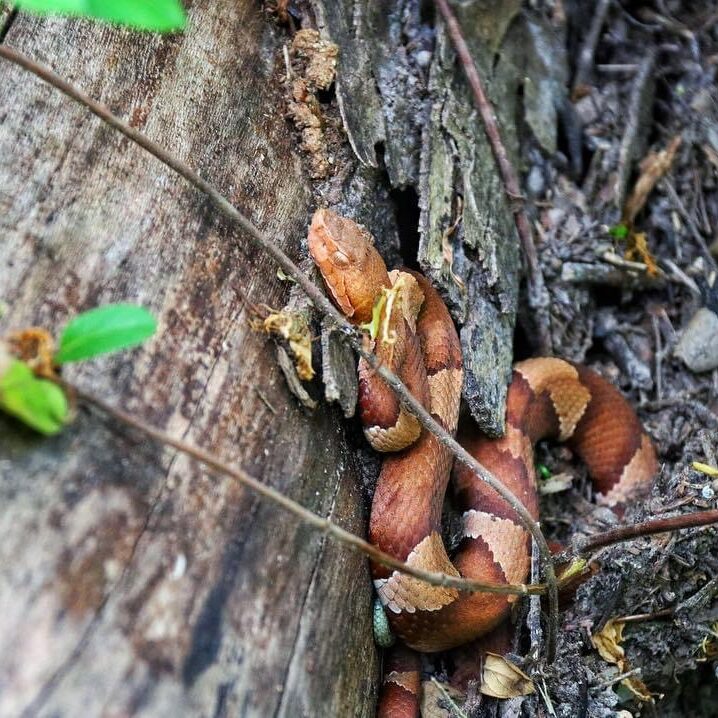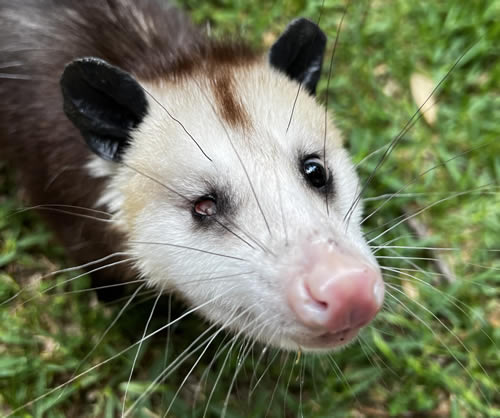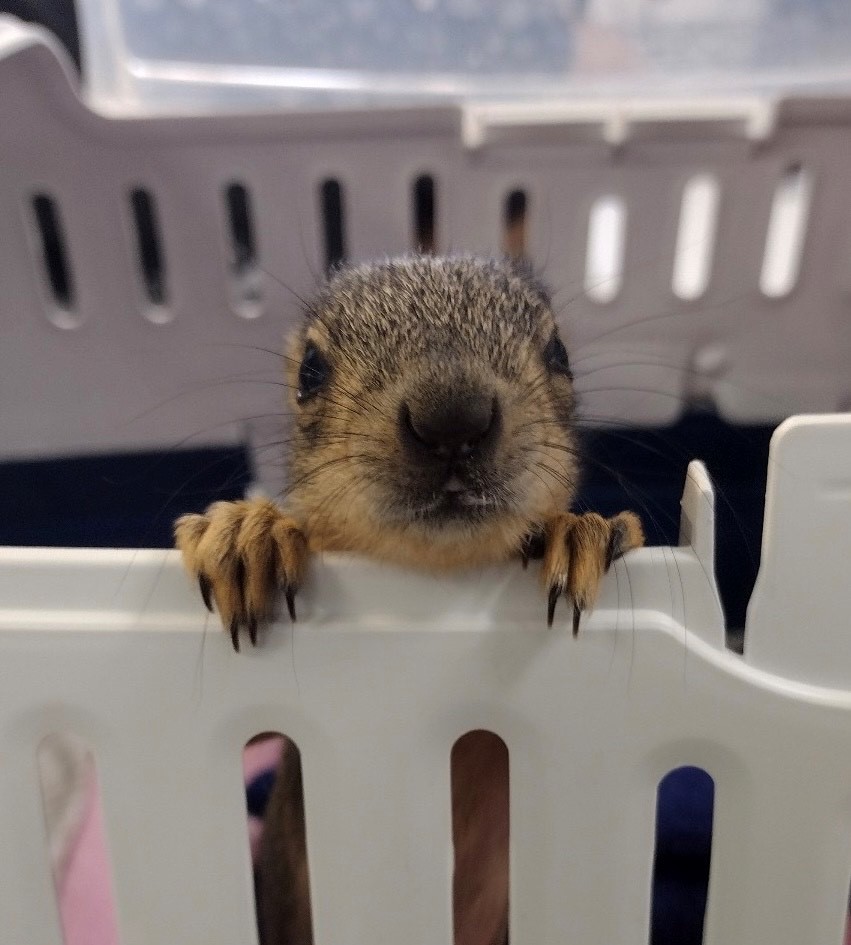Have you found a snake in your YARD?
If you have found a healthy snake in your yard LEAVE IT ALONE and let the snake move away on its own. Most snakes are harmless and are better ignored than provoked. Bring pets inside to avoid conflict, and if needed stomp on the ground 10 feet away from the snake to alert the snake of your presence. If you need to encourage the snake to move on, spray the snake with water briefly to deter it.

Have you found an ILL or INJURED snake?
If you find a snake that is:
- Caught by a cat or dog
- Visibly injured
- Lethargic
- Covered in ants or flies
- Swelling or has discharge from eyes or ears
Please contact us at 713-468-8972 as soon as possible to determine further containment steps and bring the snake in for care. If we are closed, leave a voicemail and follow the Temporary Care Instructions below.
Temporary Care Instructions for Snakes:
- Houston Humane Society Wildlife Center (HHS Wildlife Center) recommends that you wear gloves or use a cloth barrier when handling wildlife.
- Prepare an appropriate-sized tub or bucket with small air holes drilled into the lid. If all you have available is a box, place the box taped shut with small air holes into a pillowcase and tightly tie the pillowcase shut around the box. Make sure there is not any exposed tape because adhesive substances can be very dangerous for reptiles. DO NOT put the snake into a plastic bag.
- Place the snake into the prepared container. For injured snakes, place the container on its side next to the snake and use a stick, broom, or rolled-up newspaper to gently push the snake into the container.
- Do not give the snake any food or liquids. Feeding an animal an incorrect diet can result in injury or death. In addition, rescued animals can get wet from liquids and become hypothermic and/or spill food on their fur/feathers/scales, potentially causing damage.
- Keep the snake in a warm, dark, quiet place. Darkness makes the animal feel more secure. The box can be placed half-on and half-off of a heating pad for added warmth. If the snake gets too warm, it will move to the cool side that's off the heating pad to regulate its temperature.
- Leave the snake alone. Human noise, touch, and eye contact are very stressful to wild animals and can result in shock or even death. This is especially important in the case of injured or adult animals.
- If an animal has been caught by a cat or dog, please call HHS Wildlife Center immediately at 713-468-8972. Even if wounds are not visible, the animal needs medical intervention as soon as possible.
- Keep children and pets away. BE CAREFUL! An animal that is hurt or frightened may bite.
- Call HHS Wildlife Center at 713-468-8972 as soon as possible!
General Information about Snakes in the Houston Area
Because Houston is surrounded by grassy prairies, wetlands, and bayous, you can find a variety of snakes in the area. But as it is with any other wildlife, snakes try to avoid humans and would rather get away from you than confront you. Defensive behavior such as hissing, flaring up, rattling, or playing dead, warns any approaching human or animal before direct contact occurs. Biting would be the very last resort for a snake when there is no other way out to defend itself. Snake bites are very rare and with a little caution can be completely avoided. To deter snakes you can stomp your feet to alert them of your presence and patiently wait for them to move away.
Some of the snakes that can be found in Houston are garter snakes, plain-bellied water snakes, rat snakes, rough earth snakes, rattlesnakes, copperhead snakes, coral snakes, and cottonmouths. Some of these snakes are venomous, meaning they can inject poison through a bite as opposed to poisonous meaning they are lethal to be ingested. This means all snakes should be treated with respect and left alone, especially if you cannot identify the species. Giving snakes of any species a wide space when seen is the best way to keep everyone safe, avoiding walking off designated trails in parks also helps increase the chance of spotting them before getting too close.


